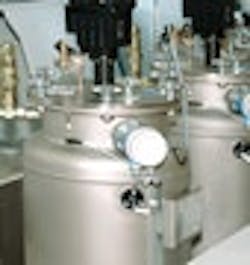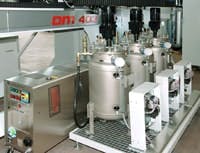Old-World Sealing in the New World
While its global headquarters in Germany celebrates a 50th anniversary, Sonderhoff USA in Elgin, Ill., is solidly proportional at one-tenth the age of its parent companyproportional because approximately one-tenth of Sonderhoffs worldwide business in all industries is in the U.S., explains Holger Huelsken, president and CEO. We provide all customer supportapplication field engineering, technical machine service, contract gasketing and material productionhere in the U.S., he says. We employ mechanical, chemical and electrical engineers, but our global company is approximately 200 employees in 14 different countries.
Sonderhoff USAs specialty is building form-in-place gasket machines, primarily for the automotive, packaging and enclosure industries. More than 50% of activity is in automotive, says Huelsken. Form-in-place is a relatively new technology. Previously a lot of gaskets were stamped. We are placing our gasket on the surface of the part. The environment around the sealed part is responsible for the demand of the gasket. Our material is approved for temperatures between -60 °F and 390 °F.
Component Mixing
The DM 403 can be designed to mix two or three components in any number of recipes before theyre shot shot through a hair to create form-in-place gaskets.
Sonderhoff USAs DM 403 can mix two or three components for dispensing. We measure pressure and temperature, explains Fuhrmann. We have hardwired I/O to get the information back to the control system, but the biggest question is speed. The machine can be fast, but the materials are tailor-made. We have more than 2,000 recipes.
The machine uses linear servo motors for three different functions. Our pumps are servo motors, says Fuhrmann. We also have three axes, and on every axis we have a servo motor. And our mixing motor is a servo motor. Thats very important because when it kicks in, we need to be at speed. We use G code as a language.
The machines can be controlled with an external PC via Ethernet or wirelessly, says Fuhrmann. Some remote diagnostics and troubleshooting also are available. We offer to include a modem with the system, he says. The modem gives our service department the ability to dial in to the machine to support the customer in more detail.
Safety features are designed and built into the machines based on customer requests. Our machines implement all international and national safety standards, says Fuhrmann. But most of our machines are embedded in a production line, so the individual safety features can vary from fences to optical sensors, depending on what the customer wants and needs.
In Elgin, Sonderhoff operates multiple departments to handle pre-development and post-sales. We operate two independent research and development departments, one for chemicals and one for machines, explains Huelsken. With these independent departments, we can also make sure our chemicals and machines are able to run with products from other manufacturers. After-sales support is divided into three groups that serve customers on local levels. Our field application engineers support customers from the chemical and material sites, our service technicians support customers technical issues, and our sales representatives stay in permanent contact with customers.


